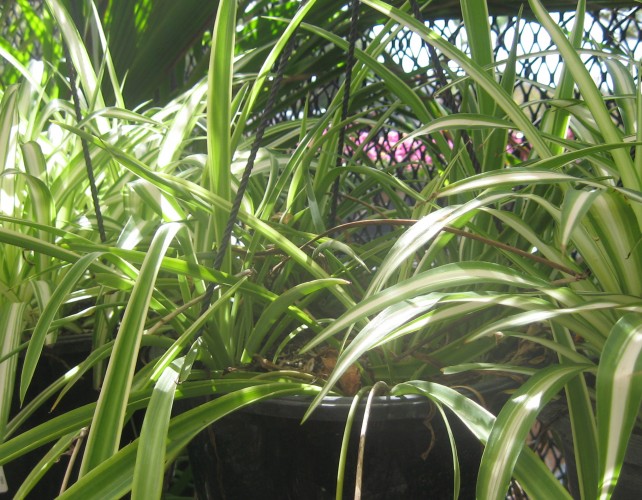
ALERT! Here’s what happened.
NASA researched ways to clean air in space stations, and contacted Dr. Wolverton, an environmental engineer, to help study air-filtering plants. In addition to absorbing carbon dioxide and releasing oxygen as all plants do, there were several plants that eliminated significant amounts of benzene, formaldehyde, xylene, toluene, and / or trichlorethylene. Dr. Wolverton assembled his findings in How To Grow Fresh Air – 50 Houseplants that Purify Your Home Or Office, where he presents 50 houseplants. For each he includes photographs and a description of each plant, what type of light conditions the plant requires, how to care for the plant, and any pests or problems that it might attract.
Something to consider.
Whenever we enter a building, whether it is our home, a school, where we work, or are doing business, we just don’t think about the air that we are breathing. That is unless we are hit with a strong or unfamiliar odor or our eyes or nose start burning or itching. Then we take notice.
We enter a building and take breathing healthy clean air for granted. When someone mentions air pollution, our mind automatically thinks of emissions coming from industrial smokestacks or lines of idling cars. We certainly don’t associate air pollution with curling up reading a book on a couch in our own home or sitting at a desk at work preparing a report. But it is indoors where we can encounter the most polluted and unhealthy air.
The US EPA estimates that indoor air quality can be two to five times more polluted than outdoor air. Poor indoor air quality can lead to a variety of allergic reactions, breathing difficulties, including asthma, burning of the eyes, nose, and throat and even cancers.
People affected by seasonal allergies from pollen, come indoors to seek relief. Inside they can be assaulted with other allergies triggered by dust mites, mold, or sensitivity to chemicals, so the relief that they are seeking will not happen.
From studies done by Wolverton and others, it has been demonstrated that plants absorb the airborne toxins and deliver them to the microbes living around the plant’s roots. The microbes then break down the toxins. Within 24 hours, Boston ferns, chrysanthemum, dracaena and ficus benjamina were able to remove 90% of the formaldehyde, benzene and trichloroethylene.
Plants not only purify the air inside a building, but improve humidity levels, and add beauty and serenity to indoor spaces.
TAKE ACTION! Here’s the good news about what you can do.
NASA suggests that we introduce 1 potted houseplant per 100 square feet of home or office space. The Boston Fern is non-toxic if ingested by children or pets and is effective in filtering out formaldehyde, toluene, and xylene. The Peace Lily is beautiful and effective in removing benzene and trichloroethylene from indoor air, but it is considered toxic if ingested by children or pets.
To find out more about air filtering plants you can order Dr. Wolverton’s book by going to our ‘store’ tab above. Dr. Wolverton’s book is a great resource, but he does not include which plants may be toxic to children or pets. If you order my FREE report “Checklist: 10 Plants That Can Filter VOCs From My Home”, you’ll find which plants are toxic and which plants are not.


